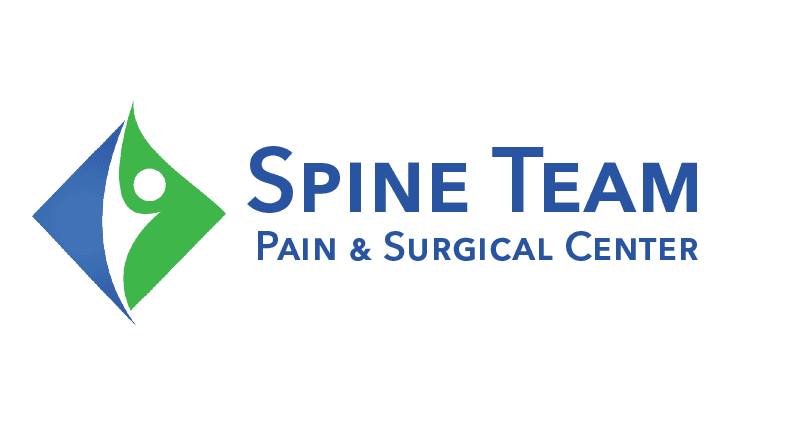What is the Next Step After a Medial Branch Block?
Are you wondering what comes after a medial branch block? A medial branch block is often the first step to pinpoint the cause of back pain.
Our article will guide you through your next steps, providing clarity on treatments and expectations for recovery.
Let's dive in!
Key Takeaways
- After a medial branch block, you may need further treatments like radiofrequency ablation or physical therapy for long-term relief.
- It's vital to follow post - procedure instructions such as resting and applying ice packs to aid recovery and minimize discomfort.
- Pain management might include medications, lifestyle changes, or more invasive procedures depending on individual needs.
- Always attend the scheduled follow - up appointment with your healthcare provider to discuss the effectiveness of the block and next steps.
- If experiencing increased pain after the procedure, promptly contacting your doctor is important for proper care.
After a medial branch block, the next step may involve further treatment options such as radiofrequency ablation or facet joint injections, as well as scheduling a follow-up appointment with your healthcare provider.
These steps are crucial in managing and relieving pain associated with spinal issues.
What is a Medial Branch Block?
A medial branch block is a procedure used to diagnose and treat pain originating from the facet joints in the spine. It involves injecting a local anesthetic near the medial branch nerves that transmit pain signals from the facet joints to the brain.
Purpose
The purpose of a medial branch block is to diagnose and temporarily alleviate pain in the facet joints, which are small stabilizing structures on your spine. Doctors use this procedure to determine if these joints are the source of discomfort by injecting a long-acting local anesthetic and sometimes a steroid around the nerves, known as medial branch nerves, that carry pain signals from the facet joints to the brain.
If you experience relief after the block, it can confirm that your facet joints are indeed inflamed and causing your pain.
By identifying this root cause, medical professionals can tailor further treatment options such as radiofrequency ablation or physical therapy for long-lasting relief. This targeted approach ensures medications only affect problematic areas without subjecting other parts of your body to unnecessary treatments or interventions.
The medial branch block acts as both investigatory tool and therapeutic intervention – aiming to break the cycle of chronic spinal discomfort with precision.
Procedure
A medial branch block is a procedure aimed at diagnosing and relieving pain. Doctors perform this technique to target nerves that send pain signals from the facet joints to the brain.
- Your doctor will ask you to lie on your stomach on an x - ray table to properly position your spine.
- They clean the skin over your affected joints with an antiseptic solution to prevent infection.
- Using x - ray guidance, called fluoroscopy, they locate the medial nerves near the facet joints of your spine.
- You'll receive a local anesthetic to numb the area before the needle insertion, minimizing discomfort.
- The physician carefully inserts a needle near these medial nerves while watching an x - ray screen to ensure accurate placement.
- A long acting local anesthetic is then injected through the needle onto the targeted nerves.
- Sometimes, doctors may inject a steroid medication along with the anesthetic for long lasting relief.
- After injection, staff move you to a recovery area where they monitor you for a short period for any immediate complications.
- Patients usually feel relief within hours if those medial branch nerves were causing their pain.
- If effective, doctors might suggest repeated injections or discuss other treatment options such as radiofrequency ablation for more permanent pain relief.
Recovery
After a medial branch block, your body begins the healing process. You might feel numbness or experience mild soreness at the injection site, which is normal. Keep the area clean and avoid strenuous activity for the rest of the day to help your body recover smoothly.
Some patients report immediate pain relief, while others may notice improvement over a few days.
Pain management continues with careful monitoring of how you respond to the procedure. If you experience significant discomfort or increased pain after several days, contact your doctor promptly.
Staying in touch with your healthcare team ensures that any concerns are addressed quickly and that your recovery stays on track toward regaining comfort and mobility in daily life.
What to Expect During a Medial Branch Block
Before the procedure, your doctor will provide you with pre-procedure instructions, and after the medial branch block, you will receive post-procedure instructions for a smooth recovery.
Pre-procedure instructions
Before undergoing a medial branch block, your healthcare provider may ask you to stop taking certain medications. Additionally, you may be instructed to avoid eating or drinking for a certain period before the procedure. Here are some more pre-procedure instructions:
- Provide a detailed medical history and inform your doctor about any allergies.
- Wear comfortable clothing and leave jewelry at home on the day of the procedure.
- Arrive at the facility on time and have someone available to drive you home afterward.
- Prepare questions to ask your doctor about the procedure.
Post-procedure instructions
After the medial branch block procedure, it is important to follow these post-procedure instructions:
- Rest: Take it easy for the rest of the day following the procedure and avoid strenuous activities.
- Ice application: Apply an ice pack to the injection site for 15-20 minutes every few hours to reduce swelling and discomfort.
- Pain management: Use over-the-counter pain medication as directed by your healthcare provider to manage any discomfort.
- Monitoring: Keep an eye on the injection site for any signs of infection such as increased redness, swelling, or drainage.
- Activity level: Gradually resume normal activities but avoid heavy lifting or excessive bending for a few days.
Can Medial Branch Block Make Pain Worse?
Medial branch blocks carry some risks and complications, including the potential for the procedure to make pain worse. It is important to be aware of these before undergoing the treatment.
Risks and complications
Risks and complications associated with medial branch blocks are generally minimal. However, as with any medical procedure, there are potential risks to be aware of. Some patients may experience temporary soreness or bruising at the injection site, while others might have a slight increase in pain for a short period after the procedure.
In rare cases, infection or nerve damage could occur, but these risks are extremely low. It's essential to discuss any concerns you have with your healthcare provider before undergoing the procedure.
Success rate and alternative treatments can also play a role in determining the best course of action following a medial branch block.
Success rate
Medial branch blocks have a moderate success rate in providing relief from back pain. Studies show that about 60-70% of patients experience significant pain reduction after the procedure.
This can lead to improved mobility and quality of life for many individuals, making it a viable option for managing spinal pain.
Patients undergoing medial branch blocks should be aware that individual results may vary based on their specific condition and overall health. It's essential to discuss expectations and success rates with your healthcare provider to gain a better understanding of how this treatment may benefit you.
Alternative treatments
After considering the success rate of medial branch blocks, patients may explore alternative treatments to manage their pain. Here are some options to discuss with your healthcare provider:
- Physical therapy: Engaging in targeted exercises and stretches can help strengthen the muscles supporting the spine and improve flexibility.
- Chiropractic care: Manipulative techniques from a chiropractor may help alleviate pain and improve spinal alignment.
- Acupuncture: This traditional Chinese practice involves inserting thin needles into specific points on the body to promote pain relief and overall wellness.
- Massage therapy: A professional massage can help relax tense muscles, increase blood flow, and reduce discomfort in the affected area.
- Nerve ablation procedures: Radiofrequency ablation or cryoablation can be performed to disrupt nerve signals and provide long-term pain relief for some patients.
- Medication management: Your healthcare provider may recommend nonsteroidal anti-inflammatory drugs (NSAIDs), muscle relaxants, or other medications to manage your pain.
- Lifestyle modifications: Making adjustments such as weight management, ergonomic changes, and stress reduction techniques can contribute to improved spine health and decreased discomfort.
Follow-up appointment
After exploring treatment options, your next step is to schedule a follow-up appointment. This is essential for your healthcare provider to assess the effectiveness of the medial branch block and determine the best course of action moving forward.
During this appointment, you may discuss any ongoing pain relief, potential side effects, and whether additional treatments or adjustments are necessary.
It's important to attend your follow-up appointment as scheduled to ensure that you receive the appropriate care and support for your spine condition. Your doctor will use this time to evaluate your progress and make any needed recommendations based on your response to the medial branch block procedure.
Conclusion
Following a medial branch block, discussing the next steps with your healthcare provider is crucial. Exploring various treatment options and scheduling a follow-up appointment are essential to address your pain effectively.
Collaborating with your medical team ensures a personalized plan for managing and alleviating discomfort. Seeking professional advice enables you to make informed decisions about your ongoing care.
FAQs
1. What does a medial branch block do?
A medial branch nerve block can relieve pain by stopping the nerves in your spine from sending pain signals to your brain.
2. What happens during a lumbar medial branch block?
During a lumbar medial branch block, a doctor uses an x-ray to guide needles to the right spot near your spinal cord and bones called vertebrae, then injects medicine to calm the nerves.
3. Is there any discomfort after getting a lumbar medial branch block?
Some people might feel sore at the injection site or experience temporary muscle pain, but these are usually mild and resolve quickly.
4. What's my next step if I get relief from a luminal medical branch block?
If you find relief with this treatment, talk with your doctor about possibly using radio waves for longer-term pain control through a procedure that targets those same nerves.




